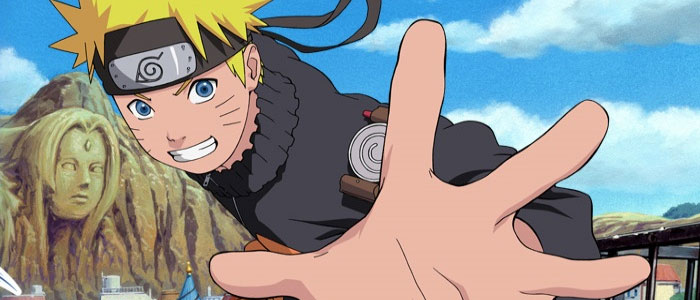[tab:Review]
I need to admit that the little I know of Naruto is from catching a few moments here and there on TV. I did read up on the subject before popping the DS card in, so as to have some idea what was going on (and make this review valuable for series fans).
Naruto Shippuden Shinobi Rumble (NSSR, for short) takes place during the Naruto Shippuden story arc, after Naruto and friends have defeated Hidan and Kakuzu, assassins of the “Akatsuki.”
In story mode, the battles follow along with the anime, pitting predetermined characters against one another to further the narrative. The first few battles switch back and forth between Naruto and Sasuke, former friends now pitted against one another. These serve as introduction to the game’s core mechanics. As this is a fighting game, the story carries minimal weight for the gameplay experience. This is an advantage, as NSSR can be an introduction to the property rather than an obstacle on the way to enjoyment.


As is typical for fighting games, status appears as two different bars: a health meter and a super meter (called chakra), which fuels teleportations, ultra moves, and, when full, can be used to trigger a “Chak-Rush.” This boost prevents you from being knocked down, pushed away, or stunned. It also allows you to use teleportation and ultra moves without consuming chakra. Once the Chak-Rush fully drains your chakra bar, it’s back to normal.
Y is light attack. X alone is guard break, but with a directional push, left or right, is hard attack. With up, X launches your foe into the air to set up air combos. B is jump. A is block. R is the Jutsu button. When upright and pressing a directional button, this teleports your character in the chosen direction. When on the ground, pressing R triggers a transformation jutsu, leaving a log in your place while teleporting to safety. Since transformation jutsu doesn’t require chakra, it’s the best way to escape from being pinned against the side of the arena.
I was puzzled by the inclusion of a dedicated jump button. I kept tapping “up” on the d-pad, expecting that to get the job done. This led to a some frustration and wasn’t something I ever got completely used to.
Special moves, Ultra moves (powered up versions of the Specials) and Chak-Rush are triggered by tapping the lower screen on the DS. Thankfully, each of these moves can also be activated with a simple directional combination (two presses) followed by Y+B for Specials or X+A for Ultras. The three skills are mapped to button combinations based on the position on the list (top, middle, or bottom). This is far better than using your finger. Moves aren’t always triggered when you want and, occasionally, I found that the wrong move triggered because my eyes were focused on the top screen, where the action happens.
Each character controls similarly, with their unique special and ultra moves being the largest differentiator. Players can customize their favorite character by choosing from an assortment of unique moves (locked to individual characters) and common buffs that every character can add to their arsenal.
In addition to the story mode, NSSR features a ton of other content: 2 – 4 player VS battles; Personal Battles, which take a character through 10 fights yielding Summoning Marks to unlock new characters and stages; and Special Missions, which are matches with specific win conditions (Win using only normal attacks, Collect a certain number of items, Avoid damage for a set period of time, etc.) that, upon success, fill up on Bingo Card that unlocks new abilities to bring into the fight.


I should note that Summoning Marks aren’t necessary to unlock characters and stages. Tomy has smartly allowed players to enter the Marks in “Freehand” mode. I was able to find images online and translate those to the touchscreen. This provides a nice balance for those that want to open up their favorite character immediately.
In VS mode, there are a bunch of configurable options to turn buff items on/off, traps on/off, time limit, number of opponents, and stage. Each leads to different strategies.
It bears mentioning that the graphics have been overhauled from the last entry in the Naruto DS series. The Ninja Destiny games were 3D fighters. This is a 2D sprite-based affair. The graphics get the job done, but the AI is atrocious, often standing in place, only becoming aggressive when you advance. It’s hit or miss, varying wildly between bewildering and unrelenting.
Multiplayer is available via local connection only, so even after you equip your favorite character with the perfect three skill arsenal, you’ll need a friend with a DS and a copy of the game to face a human opponent.
Overall, NSSR is enjoyable enough for non-Naruto fans and those craving a fighting game on the DS, of which there are few. For Naruto fans, though, the value of this title increases significantly, weaving in and out of the cherished Naruto Shippuden story.
Review copy provided by publisher.
[tab:Screenshots]
[tab:Cheats]Unlockable Characters
After fulfilling the requirements to unlock a character, their mark will appear in the Kuchiyose menu. Select their mark and copy it onto the grid on the bottom screen using the stylus, taking care to use the proper stroke order. Correctly drawing a character’s mark will unlock them, even if their mark hasn’t been acquired.
Unlockable – How to Unlock
Deidara – Complete Arcade Mode with Itachi
Fukusaku & Shima – Complete Arcade Mode with all characters
Itachi – Complete Story Mode
Jiraiya – Complete Arcade Mode with Naruto
Jugo – Complete Arcade Mode with Karin
Karin – Complete Arcade Mode with Suigetsu
Konan – Complete Arcade Mode with Jiraiya
Orochimaru – Complete Arcade Mode with Jugo
Pain – Complete Arcade Mode with Konan
Suigetsu – Complete Arcade Mode with Sasuke[tab:END]
